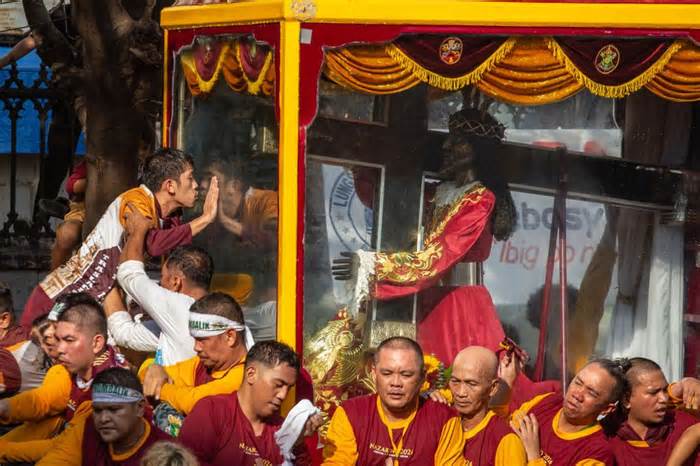By Jonah McKeown
The Philippines’ Black Nazarene procession, one of the largest devotions in the world, returned to its classic length this year for the first time since the start of the COVID-19 pandemic, attracting millions of devotees.
The procession, known locally as “Traslacion,” sees devotees carry across Manila a replica of a famous life-size statue of Jesus carrying a black wooden cross. Taking place each year in January, this year’s event marked a return to the traditional procession after three years of drastic downsizing due to the threat of COVID-19.
In 2020, 2021 and 2022, the procession was cancelled altogether. In 2023, approximately 103,277 faithful participated, far fewer than in previous years.
This year, as in years before the pandemic, millions of mostly barefoot devotees turned out along the procession route, hoping to touch the statue and obtain a miracle or healing. The Philippines is the only country in Asia with a Catholic majority, with over 80% of the population belonging to the Church.
It is believed that the symbol of Jesus used in the procession was brought from Mexico to the coast of the Philippines in 1606 by missionaries of the Augustinian Recollect Order. The life-size statue of Jesus is now enshrined in the famous Minor Basilica, known as the Church of Quiapo. , located in the Archdiocese of Manila. First consecrated in the Church of San Juan Bautista in Luneta, the symbol was transferred to Quiapo in 1868.
According to a police estimate, in the early morning hours of Jan. 9, the crowd numbered more than 830,000 people, which later reached 6. 5 million along the 6. 5-kilometer route of the procession, according to a Quiapo church official quoted by the Philippine newspaper Rappler.
This year, the icon was placed in a display case for the first time and participants were not allowed to ride the float as in previous years, with many ignoring the directive, reported UCA News, an Asian Catholic news site.
Rappler reported that the procession, which lasted 15 hours, was largely peaceful, with the Philippine Red Cross saying many other people needed medical attention due to heat stroke and injuries from the crowd.
The original statue survived the fires that destroyed the church twice, two earthquakes, typhoon floods, and World War II bombings. The church in Quiapo receives thousands of Catholics every day for Mass and confession.
The procession, according to Monsignor José Clemente Ignacio, former rector of the Quiapo church, commemorates “the transfer of the symbol from Luneta to Quiapo, when we won the statue for the first time in 1868. “
Furthermore, he said, “‘Translation’ means the movement of the symbol of the black Nazarene. In a way, it is imitating the delight of Calvary: the sacrifice and suffering that Our Lord endured for our salvation, as when Jesus walked barefoot, carrying the cross to Mount Calvary.
Authorities are reportedly on high alert in the Philippines after at least four other people were killed and 54 injured in a bomb attack on Dec. 3, 2023, during a Catholic Mass in the predominantly Muslim city of Marawi.
The Islamic State claimed responsibility for the attack in a Dec. 3 cable, a claim the country’s military said it was rushing to verify.

